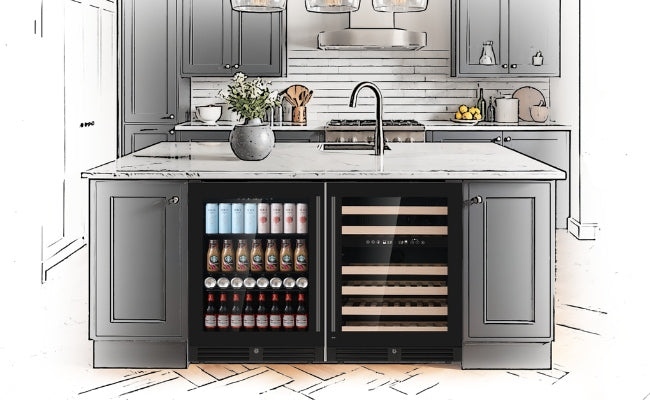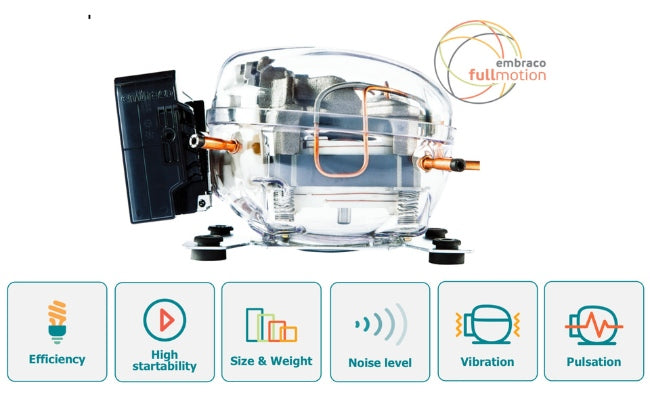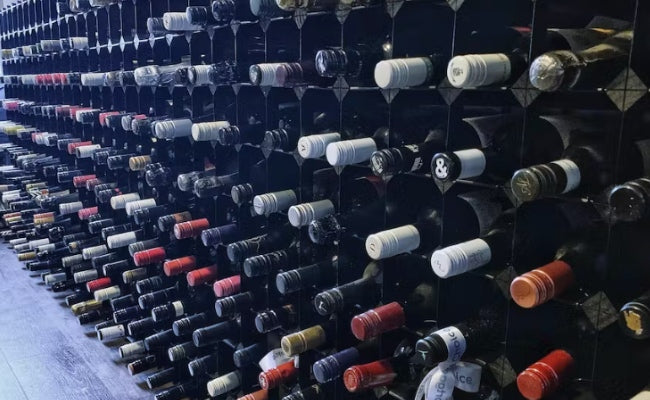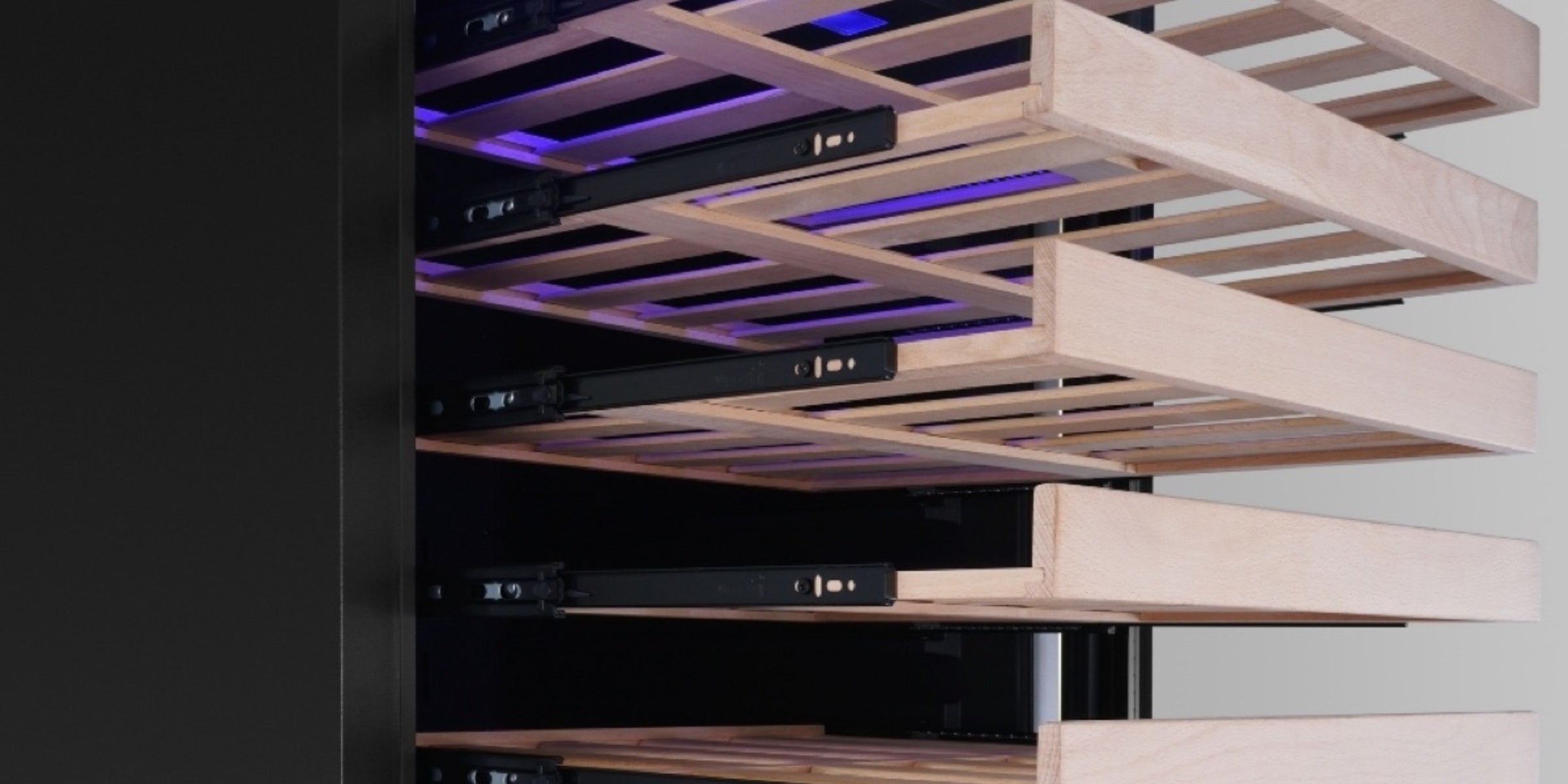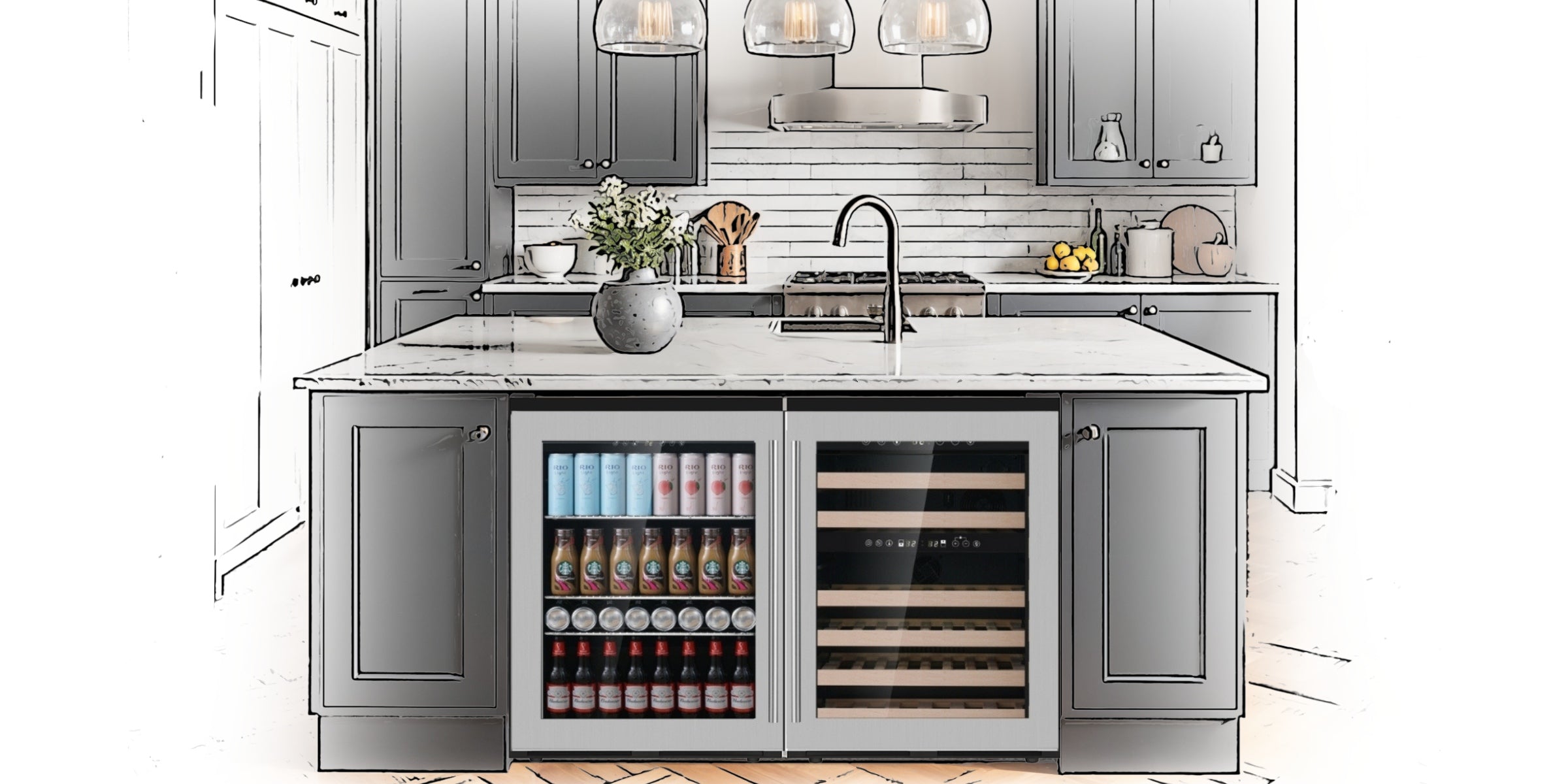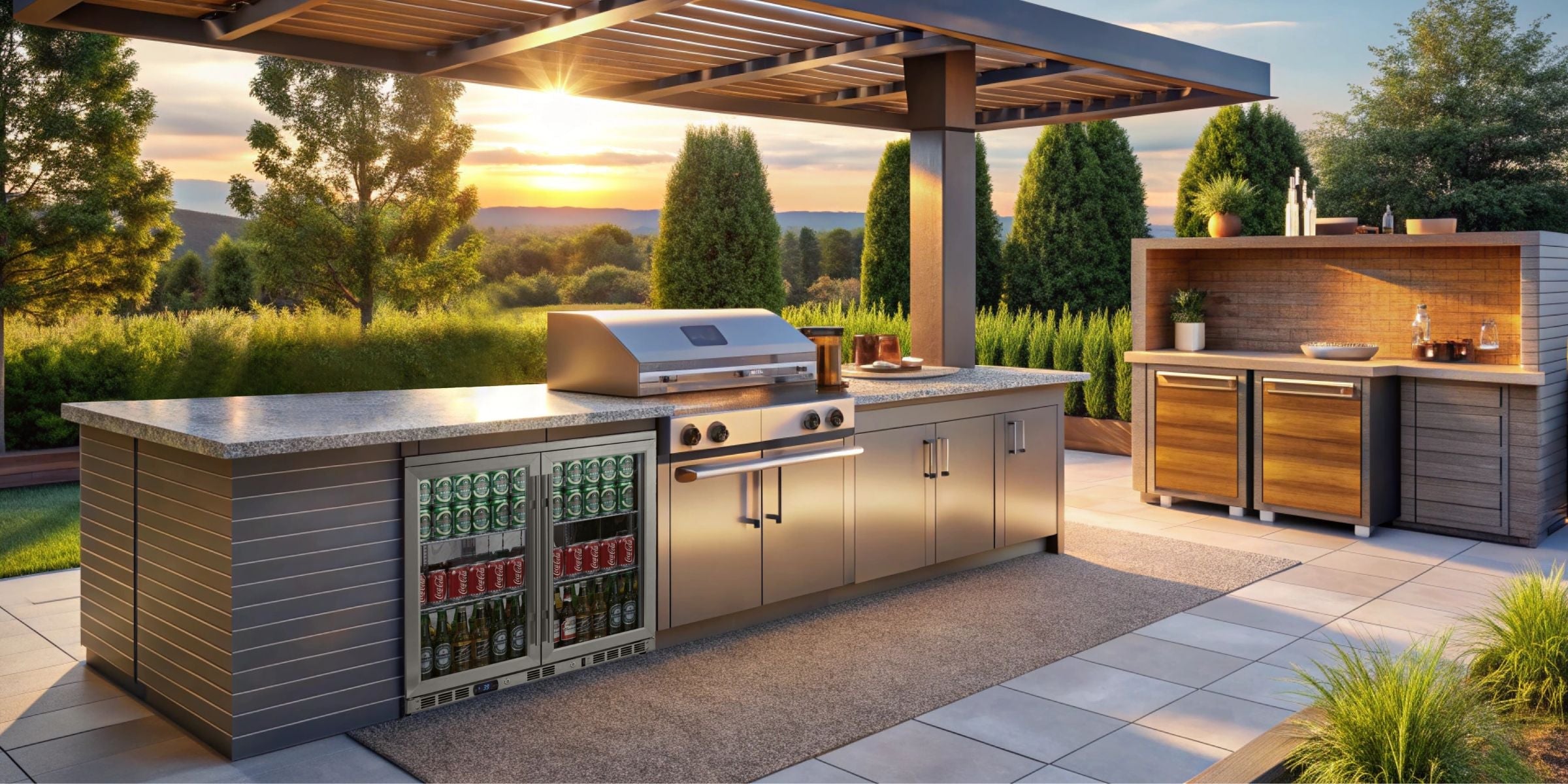
How Improper Storage Ruins Expensive Beer
Beer is one of the oldest and most beloved beverages in human history, with records of brewing stretching back thousands of years. Today, the global beer industry spans everything from mass-market lagers to meticulously crafted limited-edition releases that collectors trade like fine wine. With the rise of craft brewing, experimental ingredients, and aging techniques, beer has become more than a casual drink, it’s a sensory experience and, for many, an investment.
But no matter how much care brewers put into their product, all of that effort can be destroyed if the beer is stored incorrectly. Just like wine, cheese, or cigars, beer is highly sensitive to its environment. Heat, light, oxygen, vibration, and time all conspire against its delicate flavors. A $30 bottle of a Belgian Tripel or a rare imperial stout can be rendered undrinkable if exposed to the wrong conditions for just a few weeks.
Why Proper Beer Storage Is Critical
At first glance, beer seems like a simple product: water, malt, hops, and yeast. But those four ingredients create an extraordinary range of chemical compounds that deliver flavor, aroma, body, and mouthfeel. These compounds are fragile, constantly interacting and changing over time.
Unlike whiskey or brandy, which can last indefinitely in a sealed bottle, beer is alive. Even pasteurized beers slowly degrade, while unpasteurized or bottle-conditioned beers continue to evolve in ways both good and bad depending on storage.
The Science Behind Beer’s Fragility
-
Volatile hop oils: Responsible for citrusy, piney, or tropical flavors, but highly unstable. Heat and oxygen strip them away in weeks.
-
Malt compounds: Provide caramel, bread, chocolate, or roasted notes. Exposure to oxygen transforms them into dull, papery flavors.
-
Proteins and polyphenols: Contribute to haze stability. Heat and light accelerate their breakdown, leaving beer cloudy or flat.
-
Yeast activity: In bottle-conditioned beers, live yeast can either create beautiful complexity or, under poor conditions, cause off-flavors and over-carbonation.
All of this means one thing: storage is not optional. It’s the difference between enjoying a layered, nuanced beverage or pouring money down the drain.
The Enemies of Beer Quality in Detail
Let’s break down each of the threats to beer and understand why they’re so destructive.
1. Heat: The Silent Killer
Heat is perhaps the biggest enemy of beer. Even modestly elevated temperatures dramatically speed up chemical reactions.
-
Oxidation: At higher temperatures, oxygen molecules bond faster with flavor compounds. The result? A papery, cardboard-like taste.
-
Hop degradation: Bright hop aromas in IPAs or pale ales disappear within weeks if kept at room temperature instead of cold storage.
-
Color changes: Prolonged heat can darken pale beers, making them look as bad as they taste.
Think of beer like milk; leave it in the sun, and it spoils. A study by brewing scientists showed that beer stored at 86°F (30°C) for one week aged as much as beer stored at 59°F (15°C) for three months.
2. Light: Instant Skunk
Beer exposed to ultraviolet light suffers from a process called “lightstruck.” This reaction occurs when UV rays interact with hop-derived compounds, creating chemicals nearly identical to those released by skunk spray.
-
Clear and green bottles: Offer little to no protection. A Heineken left in the sun for 15 minutes can develop skunky notes.
-
Brown bottles: Provide some defense, but are not invincible.
-
Cans: Offer total protection from light, which is why many craft breweries have shifted to aluminum.
3. Oxygen: The Slow Poison
Oxygen exposure is inevitable to some degree during packaging, but excess oxygen is a disaster. Over time, oxygen creates staleness, dull flavors, and chemical breakdown.
-
Papery taste: The most common oxidation flavor.
-
Sherry or port notes: Sometimes pleasant in strong beers, but overwhelming if unintended.
-
Diminished hops: Oxygen quickly neutralizes hop aromatics.
4. Vibration: The Overlooked Enemy
While less talked about, vibrations from appliances or transportation can damage beer, especially bottle-conditioned varieties. Sediment that should remain settled mixes into the beer, altering texture and flavor.
5. Time: Friend and Foe
Time is both a blessing and a curse. Some beers are best consumed within days of release (like New England IPAs), while others improve over years (like lambics or imperial stouts). The trick is knowing which is which and storing them accordingly.
The Most Common Storage Mistakes
Mistake #1: Keeping Beer in Warm Spaces
Many people keep beer in the pantry, garage, or even a closet. Unfortunately, these locations often reach temperatures above 75°F (24°C), which rapidly accelerates spoilage.
Mistake #2: Displaying Beer in the Light
Collectors sometimes proudly display rare bottles on open shelves. While aesthetically pleasing, this exposes them to ambient light that slowly ruins them.
Mistake #3: Upright vs. Side Storage Confusion
Most beers should be stored upright to minimize oxygen contact with the cap. However, corked bottles (like Belgian ales or specialty sours) benefit from horizontal storage to keep corks moist.
Mistake #4: Refrigerator Cycling
Repeatedly chilling and warming beer is worse than keeping it consistently cool at slightly higher temperatures. Temperature swings stress the liquid and accelerate aging.
Mistake #5: Assuming All Beers Age Like Wine
Only certain high-alcohol or sour beers are suitable for cellaring. IPAs, wheat beers, and most lagers lose their defining qualities within months.
Style-Specific Storage Guidelines
Hop-Forward Beers
-
Examples: IPAs, Pale Ales, Double IPAs.
-
Storage: Always cold (35–45°F / 1–7°C), upright, and consumed quickly.
-
Shelf life: Weeks, not months.
Dark and Malty Beers
-
Examples: Imperial Stouts, Porters, Barleywines.
-
Storage: 50–55°F (10–13°C) is acceptable. Can be aged.
-
Shelf life: Months to years depending on ABV.
Belgian Ales & Sours
-
Examples: Lambics, Gueuze, Tripels, Quadrupels.
-
Storage: Dark, cool, sometimes on the side if corked.
-
Shelf life: Many years with proper care.
Lagers
-
Examples: Pilsners, Helles, Bocks.
-
Storage: 35–40°F (1–4°C), upright, consumed fresh.
-
Shelf life: 2–6 months.
Signs Your Expensive Beer Has Been Ruined
When beer is stored improperly, the signs of damage aren’t always obvious until you take that first disappointing sip. Knowing what to look for can save you from wasting an entire bottle, or worse, serving a ruined beer to guests. Here are the most common red flags:
1. Unpleasant Aromas
The first indicator of spoiled beer is often the smell. A fresh IPA should burst with citrus and tropical hops, while a stout should smell of roasted malt and chocolate. If instead you detect skunky notes (caused by light exposure), sulfuric egg-like odors (from microbial activity), or musty cellar-like smells, the beer has likely gone bad.
2. Off-Flavors
Taste is the clearest giveaway. Oxidation creates papery or cardboard-like flavors, while prolonged heat can introduce sourness in beers that aren’t meant to be tart. Infected bottles may even taste like vinegar, which is a clear sign of microbial contamination.
3. Flat Mouthfeel
Properly stored beer should retain its lively carbonation. When storage conditions compromise seals or pressure balance, the result is a beer that feels dull and lifeless on the tongue, completely robbing it of the refreshing snap drinkers expect.
4. Visual Changes
Appearance tells a story. Hazy IPAs may look cloudier than intended, while pilsners and lagers may develop a murky look. Color changes are also a bad sign: golden ales that have turned a darker amber or brown suggest oxidation or heat damage. Sediment floating in styles that are usually clear also indicates spoilage.
5. Over-Carbonation or Exploding Bottles
At the extreme end, poorly stored beer can become dangerous. High temperatures or microbial growth can cause excess carbonation, leading to foaming gushers or even exploding bottles. This not only ruins the beer but can damage your storage area and pose safety risks.
Best Practices for Long-Term Beer Storage
Storing beer isn’t just about finding a cool corner in the house. If you’ve invested in rare, imported, or small-batch craft beer, you need to think like a curator. Just as wine collectors build cellars and cigar lovers invest in humidors, beer enthusiasts must create the right environment to preserve flavor, aroma, and character. Let’s break down the essential practices and why they matter.
1. Maintain Consistent Temperature
Temperature swings are one of the fastest ways to ruin beer. A fridge that fluctuates between 40°F and 55°F may not seem harmful, but the constant expansion and contraction stresses the liquid and accelerates aging. Ideally:
-
Everyday beers: 35–40°F (1–4°C)
-
Beers suitable for aging: 50–55°F (10–13°C)
Consistency is more important than perfection. If you can’t achieve a precise number, aim for stability.
2. Protect Against Light Exposure
Light is the enemy of hops and delicate compounds. Even indirect exposure from fluorescent bulbs can slowly degrade beer. To counter this:
-
Store in a dark cupboard, cellar, or specialized fridge.
-
If bottles are displayed, use UV-filtering glass doors or cover them with opaque material.
-
Prioritize cans and brown bottles for beers you expect to keep longer.
3. Store Upright (With Exceptions)
For most beers, upright storage is best, it minimizes the liquid’s contact with the cap, reducing oxygen transfer and preventing leakage. However:
-
Corked bottles (like Belgian ales) should be stored on their side to keep corks moist and airtight.
-
Bottle-conditioned beers with live yeast may be better upright, preventing sediment from mixing.
4. Reduce Vibrations
Beer might not be as delicate as wine, but constant vibrations can disturb sediment in unfiltered or bottle-conditioned varieties. Keep beer away from appliances like washing machines, HVAC systems, or speakers. The less movement, the more stable the beer remains.
5. Monitor Humidity (For Corked Bottles)
If you cellar beers with cork closures, humidity plays a crucial role. Too dry, and the corks shrink, allowing oxygen in. Too humid, and mold can form. Aim for 55–70% relative humidity, similar to wine storage.
6. Separate Fresh-Drink Styles From Aging Styles
Not all beer belongs in long-term storage. IPAs, wheat beers, and lagers should be consumed quickly, as their defining features (hop brightness, crispness, delicate malt) fade fast. Save your cellar space for:
-
Imperial stouts
-
Lambics and gueuze
-
Barleywines
-
Belgian tripels and quads
7. Track and Rotate Inventory
Nothing ruins a collection like forgetting what you own. Use labels, apps, or spreadsheets to track:
-
Purchase date
-
Best-by date
-
Ideal drinking window
Follow a first-in, first-out system for fresh beers, while reserving aged bottles for special occasions.
8. Keep Away From Strong Odors
Beer can absorb smells through corks or imperfect seals. Avoid storing near cleaning supplies, spices, or strong-smelling foods like onions and garlic.
Advanced Storage for Serious Collectors
-
Climate-controlled cellars with humidity monitoring.
-
Smart inventory apps that send alerts when a beer is reaching peak age.
-
Specialized fridges with separate zones for lagers, ales, and aging beers.
For enthusiasts, proper storage is an extension of the hobby, ensuring every rare release is preserved for the perfect occasion.


